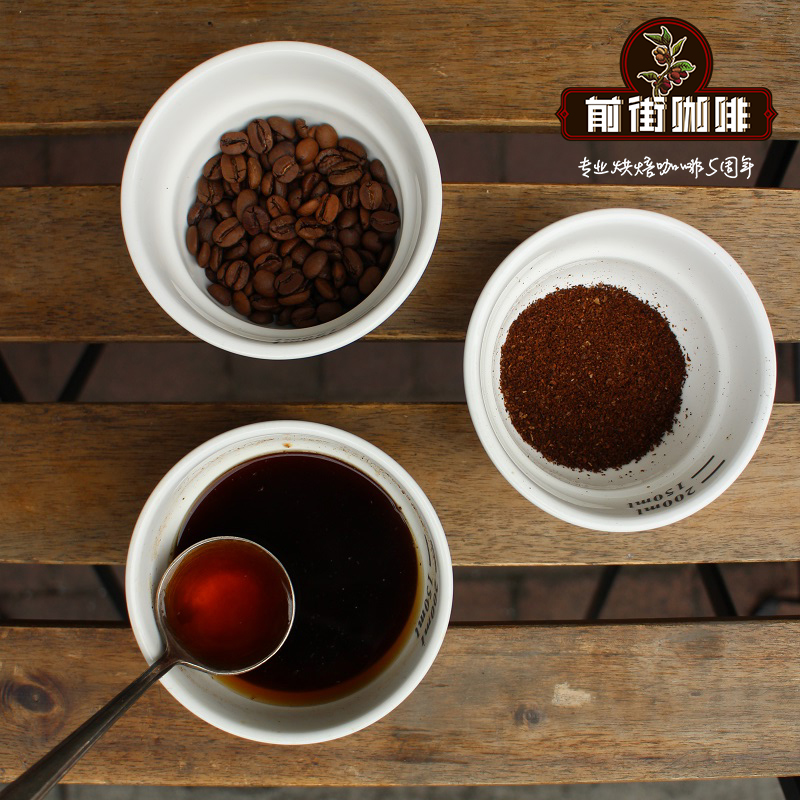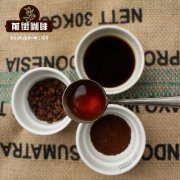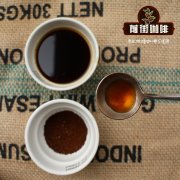Brazil's unique coffee grading system-cup evaluation test introduces how Brazilian coffee is graded.

Professional coffee knowledge exchange more coffee bean information please follow the coffee workshop (Wechat official account cafe_style)
On the other side of Africa is the Americas, although the birthplace of coffee is in Africa, but the Americas always take the lead, and the most representative is "Brazil"; for Brazil, what fans will not forget is 3R "Ronaldo, Rivaldo, Ronaldinho" and "Samba Legion" is even more familiar.
For coffee people, it may be cruel and realistic. Brazilian coffee is not the best but mediocre.
There are 21 states in Brazil, of which 17 are growing coffee, which shows the importance of coffee in Brazil, but the growing environment and quality vary greatly from state to state.
Most of the growing areas in central and southern Brazil are planted on plateaus above 500m, while in the north and west of the Amazon basin, they are planted on plains below 200m.
If you have seen Chen Hao's "Taste Coffee", you may know that coffee cultivation in Brazil is ill-fated. First, the outbreak of the economic crisis, then the erosion of leaf rust, and then the influence of the weather, has led to the continuous decline in the quality of coffee cultivation in Brazil, and the rising cost has led to the inability to produce high-quality coffee beans for a long time.
For Brazil, the feeling is more smooth and mellow, but here to mention a word "Rioy", the generation of this word is also very wonderful. Brazil has a bean exported by Rio de Janeiro, and after the evaluation of many coffee buyers produced the word "Rioy" to describe the pungent smell of medicine and strong iodine in the coffee.
However, Brazil has been affected by drought in recent years, and its output and quality are getting lower and lower. I hope we can all drink "good Brazilian coffee".
Brazil is the largest coffee producing country in the world. Because of its large output and many producing areas, the classification work is quite troublesome, and it is not suitable to adopt a single classification standard, so Brazil also uses a variety of classification methods at the same time. Defective bean proportion, sieve and cup evaluation tests are all used in the grading process of Brazilian coffee beans. Needless to say about the first two, the cup evaluation test is one of the characteristics of Brazilian coffee grading.
The so-called cup evaluation test is to evaluate the aroma and taste of raw coffee beans by soaking them in hot water (about 90 degrees) after baking. It is mainly divided into six grades: Strictly Soft extremely mild, Soft mild, Softish slightly mild, Hard difficult, Rio light iodine taste, Rioy strong iodine flavor. The first three grades can be called mild, with a balanced sweet and sour coffee and a mild taste. The latter three taste slightly worse, especially the latter two are the worst. The reason for the iodine smell is that the soil near Rio de Janeiro has a strong iodine smell, and the coffee is dropped on the ground during harvest and is contaminated with the peculiar smell of the adsorbed soil.
Important Notice :
前街咖啡 FrontStreet Coffee has moved to new addredd:
FrontStreet Coffee Address: 315,Donghua East Road,GuangZhou
Tel:020 38364473
- Prev

Introduction to the Origin and Flavor of Brazilian bourbon Coffee and Yellow bourbon Coffee
Professional coffee knowledge exchange more coffee bean information please follow the coffee workshop (Wechat official account cafe_style) Brazilian bourbon Coffee introduction: bourbon BOURBON (French: BOURBON) is a kind of coffee produced by Arabica coffee bourbon cultivation. Bourbon coffee was originally grown in Reunion, where it was also known as LE BOURBON before 1789.
- Next

Why is Kopi Luwak so expensive? is Kopi Luwak really so bad?
Professional coffee knowledge exchange more information about coffee beans Please follow the coffee workshop (Wechat official account cafe_style) Kopi Luwak is one of the most expensive coffee in the world, the price per pound is as high as a few hundred dollars. When it comes to cat shit, not all cats can produce tree Kopi Luwak. Only civet cats on the Indonesian island of Sumatra can produce Kopi Luwak. The civet ate it.
Related
- Detailed explanation of Jadeite planting Land in Panamanian Jadeite Manor introduction to the grading system of Jadeite competitive bidding, Red bid, Green bid and Rose Summer
- Story of Coffee planting in Brenka region of Costa Rica Stonehenge Manor anaerobic heavy honey treatment of flavor mouth
- What's on the barrel of Blue Mountain Coffee beans?
- Can American coffee also pull flowers? How to use hot American style to pull out a good-looking pattern?
- Can you make a cold extract with coffee beans? What is the right proportion for cold-extracted coffee formula?
- Indonesian PWN Gold Mandrine Coffee Origin Features Flavor How to Chong? Mandolin coffee is American.
- A brief introduction to the flavor characteristics of Brazilian yellow bourbon coffee beans
- What is the effect of different water quality on the flavor of cold-extracted coffee? What kind of water is best for brewing coffee?
- Why do you think of Rose Summer whenever you mention Panamanian coffee?
- Introduction to the characteristics of authentic blue mountain coffee bean producing areas? What is the CIB Coffee Authority in Jamaica?

